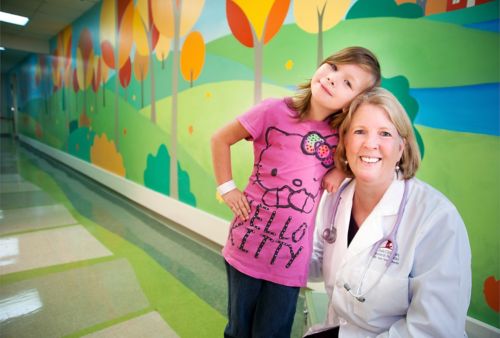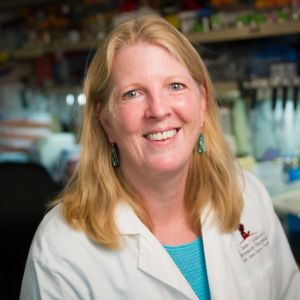St. Jude Family of Websites
Explore our cutting edge research, world-class patient care, career opportunities and more.
St. Jude Children's Research Hospital Home

- Fundraising
St. Jude Family of Websites
Explore our cutting edge research, world-class patient care, career opportunities and more.
St. Jude Children's Research Hospital Home

- Fundraising
Inheriting cancer: Leading the conversation about increased genetic risk

Dr. Kim E. Nichols focuses on the molecular mechanisms that provide protection against viral infections and cancer. Understanding how defects in those mechanisms contribute to disease can be used to design more effective treatments for children with increased genetic risk for infection and/or malignancy.
In the Cancer Predisposition Program at St. Jude Children’s Research Hospital, we identify and care for children who have an increased genetic risk for cancer. But we also have a responsibility to look beyond our patients to children worldwide who have genetic conditions that make them vulnerable to developing cancer. As a result, we are constantly working to increase awareness of childhood cancer predisposition syndromes and to facilitate diagnosis and treatment for affected children.
In October of last year, I collaborated with experts from many other institutions around the world to develop standardized screening recommendations for children with common cancer predisposition syndromes. Our work occurred as the outgrowth of a special workshop sponsored by the American Association for Cancer Research (AACR).
As part of this project, my colleagues and I created desperately needed surveillance recommendations for syndromes and conditions associated with a genetic predisposition to a variety of cancers, including leukemia.
As the most common childhood cancer, leukemia accounts for about 31 percent of cancers in children under age 15. Although most of these leukemias are not thought to be hereditary, some are caused by germline (inherited) mutations. Because many of these mutations have only recently been discovered, standardized surveillance and treatment guidelines are lacking.
Our panel brought together many of the world’s experts in this area to create consensus recommendations for children and young adults with hereditary conditions that predispose them to leukemia.
For several of these conditions, it is crucial to provide routine monitoring with complete blood counts and bone marrow evaluations. For some patients, bone marrow transplants are required. For others, less intensive surveillance may be necessary.
Our work will help clinicians determine which avenue is best for their patients. However, these recommendations are only a starting point. As we learn more about these diseases, we will revise the recommendations.
To enhance our understanding of genetic syndromes and conditions, we must develop clinical trials and establish registries. Only through sustained collaboration and research can we improve outcomes for children and families with a genetic predisposition to cancer.
During the past few months, members of the AACR Pediatric Cancer Working Group published 18 articles that highlight the genetic nuances associated with childhood cancer predisposition syndromes and offer specific surveillance guidelines. We have shared our consensus recommendations with the global medical and research communities through Clinical Cancer Research, an online journal published by AACR.
Clinicians and researchers around the world can now access these guidelines as they diagnose, treat and counsel families who may have inherited genetic mutations that predispose them to cancer. As we work together to facilitate early detection and treatment, even more lives can be saved.






